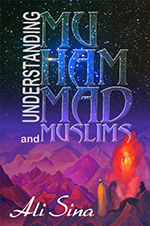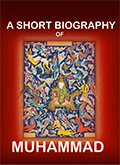The Islamic New Year and Other Half-Truths

This week marks the beginning of another new (Islamic) Hijri year for Muslims throughout the world. The date marking the new Hijri year is determined by various techniques — including the use of scientific and astronomical calculations, or conducting an official moon-sighting exercise. The method adopted differs from country to country.
The Islamic new year — chosen as the starting point for the calendar in 639 AD, by Omar Ibn al-Khattab, the second Sunni caliph — starts with the migration, also known as the Hijrah, of Prophet Muhammad and his companions from Mecca to Medina in 622 AD, after they, according to Islamic sources, were repeatedly persecuted and threatened in Mecca. Such narratives could not be any further away from the truth.
As I detail in my book Islam: Religion of Peace? – The Violation of Natural Rights and Western Cover-Up, after Muhammad claimed to have had his first vision with the Archangel Gabriel in 610 AD, he did not directly assail anyone, with the exception of the Quraysh Meccans, the custodians of the pagan shrines and ruling aristocracy in Mecca. In fact, most Meccans initially brushed him off, since he managed to recruit very few converts. After a few years, however, they began to have disdain for him as he vehemently demanded complete submission to his preaching, which meant that the various tribal inhabitants would have to cease their polytheistic practices at the Ka’aba.
The Quraysh, in particular, had expressed contempt more than the other clans because their enormous political and religious authority was threatened, especially in light of the fact that their source of wealth depended on the pilgrims and merchants who frequented Mecca.
Discouraged in not being able to convert his fellow Meccans, it was at this point that according to Sirat Rasul Allah by Ibn Ishaq — the first biography of the prophet of Islam — Muhammad received a revelation from Satan with the aim of bringing some sort of accord with them.
The devil told him that it was legitimate for Muslims to pray to the pagan Quraysh’s three main goddesses: al-Lat, al-’Uzza, and Manat — the deities that he himself had preached against — as intercessors for Allah:
Then Allah sent down “By the star when it sets your comrade errs not and is not and is not deceived, he speaks not from his own desire,” and when he reached his words “Have you thought of al-Lāt, al-’Uzzā and Manāt the third, the other,” Satan, when he was meditating upon it, and desiring to bring it to his people, put upon his tongue “these are the exalted Gharānīq whose intercession is approved.” —Ibn Ishaq, 165–166
The Quraysh were naturally led to believe that Muhammad had acknowledged the legitimacy of their gods, since he not only spoke highly of them but also publicly participated in their public worship.
It was only after Muhammad recanted and thereby committed himself to usurp the Quraysh’s authority by force that the town’s elders sought to exile him or put him to death. Ibn Ishaq confirms this by chronicling the discussion of the Meccan Council, which “opened with the statement that now that Muhammad had gained adherents outside the tribe, they were no longer safe against a sudden attack and the meeting was to determine the best course of action, [which was] to put him in iron bars[,] drive him out of the country [or] kill him.” —Ibn Ishaq, 324–325
Muhammad was forced to flee his hometown to Yathrib (later renamed al-Madina, Medina, “the city”) after his plot was discovered.
It was at this moment, during the Hijrah or Hegira, the migration to Medina in 622, that Islam “officially” came into existence. Muhammad’s flight was not the result of persecution, as Muslim panegyrists or revisionists recount, but the consequences of his failure to subvert the Meccans.
Upon arrival in Medina, in an attempt to gain the support from the Jewish families who hosted him and his handful of followers, Muhammad (and his disciples) oriented prayers toward Jerusalem and observed a fast for the Judaic feast of Yom Kippur. In this cunning move, he was able to draw financial sustenance from the Jews. Even though he failed to be recognized as a prophet by them, Muhammad was financially able to recruit other men, whom he compelled to use violence to further his desires. He contemporaneously reoriented his prayertoward Mecca and consequently became destined to conquer the pagan Arabs there
In 627 AD, Muhammad committed an atrocity against the last remaining major tribe of Jews in Medina: the Qurayza. He beheaded the men and the pubescent boys and enslaved the women and children. He then returned to Mecca in 630, taking the city without any opposition.
As Efraim Karsh, in his Islamic Imperialism: A History, Muhammad ceased being a private preacher and became a political and military leader. His purpose was not to rid himself “of foreign occupation but to strive for a new universal order in which the whole of humanity would be able to embrace Islam or live under its domination.” And the rest was history.
__________________________________________________

Mario Alexis Portella is a priest of the Cathedral of Santa Maria del Fiore and Chancellor of the Archdiocese of Florence, Italy. He has a doctorate in canon law and civil law from the Pontifical Lateran University in Rome; he also holds a M. A. in Medieval History from Fordham University, as well as a B.A. in Government & Politics from St. John’s University. He is also author of Islam: Religion of Peace? – The Violation of Natural Rights and Western Cover-Up.

Book available on Amazon, Barnes & Noble or WestBow Press





Recent Comments